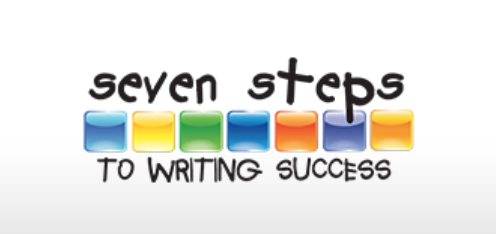What Happens When Emotions Go Unmanaged at Work?
Have you ever had a conversation that you wish you could have handled differently?
We’ve all had those moments—tough discussions that stick with us, both at work and in our personal lives.
Lauren Ayers, our Senior HR and Recruitment Consultant, shared a personal story that highlights the importance of being emotionally aware during conflict situations.
What happened?
Lauren emailed her team for clarification on a task, expecting a straightforward answer. Instead, she received a response from a colleague that felt overly critical. Despite being just a few steps away, her colleague chose to reply to her via email.
As someone with a more Dominant (Di) communication style, Lauren felt frustrated. She believed the issue should have been discussed face-to-face, and the email felt disrespectful.
In her frustration, Lauren walked over to the colleague’s desk and said, “If you’ve got an issue, why wouldn’t you just come and talk to me? I’m right here!” Her direct approach escalated the situation instead of resolving it.
Her colleague, likely with a pure Steadiness (S) or mixed with Influential (i) style, had a different, less confrontational approach.
Reflecting on the incident, Lauren said:
“If I’d emailed that colleague directly, I would have expected a straightforward response. But as a people manager, I needed to communicate with the whole team. That colleague probably felt like being put on the spot, while I displayed my frustration in front of everyone present in our open office.”
The outcome?
An unproductive exchange that left both parties feeling frustrated. Lauren shared, “I realised that I didn’t really help the situation with my reaction. I ended up venting instead of addressing it constructively.”
THE ROLE OF EQ IN PRODUCTIVE CONFLICT
Understanding and managing your communication style and emotional triggers, including how others respond is key to avoiding unproductive conflict, especially when tensions rise.
Emotional intelligence allows individuals to recognise that their initial reactions may not always be constructive. It creates opportunities to pause and think before taking action, leading to more thoughtful and productive interactions.
For example, if Lauren had taken a moment to acknowledge her frustration and considered her colleague’s communication style, as well as the level of maturity—and vice versa—the outcome of their interaction could have been more positive.
Reflect on this: What conversation do you wish you could have handled differently? Are you preparing for an upcoming tough discussion? Reach out to our experts, and let us explore ways on how we can help you get ready.
WANT BETTER PEOPLE AND BUSINESS PERFORMANCE? EQ CAN DRIVE THAT!
What is EQ at work? According to Dr. Mark Scullard, Senior Director of Product Innovation at Everything DiSC: A Wiley Brand, emotional intelligence (EI), or emotional quotient (EQ), refers to your ability to make good choices in emotional or social situations.
While managing your own emotions is important, EQ goes beyond that. It also includes recognising and influencing the sentiments of others—a crucial workplace skill, especially for leaders.

In small to medium-sized enterprises (SMEs), where resources are often limited, integrating EQ into leadership can greatly enhance operations.
It consists of five key components: self-awareness, self-regulation, motivation, empathy, and social skills—all essential for resolving workplace conflicts, achieving sustainable business results, and inspiring your people during interactions like watercooler chats, performance reviews, and meetings.
FROM FRUSTRATION TO COLLABORATION: LET EQ LEAD YOUR HUDDLES!
A significant majority of employees believe that constructive feedback, when communicated effectively, enhances performance. However, without EQ, feedback can easily be misinterpreted as criticism.
This uncertainty often leads managers to avoid crucial conversations. Unchecked emotions can transform simple discussions—whether in formal meetings, virtual check-ins, or quick emails—into stressful exchanges or conflicts.
As Warren noted in the Mastering Difficult Workplace Conversations webinar, “When the situation arises, you need to have the conversation!”
EQ can facilitate tough discussions and transform tension into mutual understanding. To illustrate its impact, here are three real-life scenarios showing how meetings can unfold with and without emotional intelligence.
Scenario 1: Misunderstood Feedback in a Team Meeting
Without EQ: In a project update meeting, a team leader criticises a team member’s work, pointing out several issues in front of the whole group. The team member feels embarrassed and defensive, shutting down for the rest of the meeting. Tension grows as the rest of the team becomes uneasy, not wanting to face similar criticism.
With EQ: In the same meeting, the leader uses emotional intelligence to provide constructive feedback. Instead of public criticism, they frame the feedback with empathy, addressing the team member’s efforts and asking how they can support improvements. The conversation stays positive, and the team member feels encouraged to improve rather than demoralised. The rest of the team remains engaged and collaborative.
Scenario 2: Handling a Sensitive Topic in a Strategy Meeting
Without EQ: In a strategy meeting, a sensitive topic about team performance is raised. The leader launches into the discussion without considering the emotional state of the team, and emotions quickly flare up. One person feels targeted, another interrupts to defend themselves, and the meeting spirals into unproductive conflict.
With EQ: Before diving into the topic, the leader uses emotional intelligence to set the tone. They acknowledge that the discussion might bring up sensitive emotions and express a willingness to listen to all perspectives. By showing empathy and creating a safe environment, they encourage open dialogue. The meeting remains calm, productive, and solutions-focused, avoiding any personal attacks or misunderstandings.
Scenario 3: Unspoken Frustrations and Team Disconnect
Without EQ: Team members show up to meetings feeling unheard and disconnected from the leadership. Frustrations build as people avoid speaking up, fearing it will create more conflict. Over time, these unspoken emotions lead to disengagement, with team members showing less initiative, reducing collaboration, and attending meetings out of obligation.
With EQ: A leader with strong emotional intelligence notices the lack of engagement and initiates a more open, inclusive meeting format. They begin the meeting by asking for feedback, listening to concerns, and validating each person’s input. By showing empathy and addressing team frustrations early, the leader encourages team members to participate more actively, fostering a sense of belonging and improving collaboration.
In each scenario, EQ turns tension, miscommunication, and conflict into opportunities for growth and stronger team cohesion. By understanding and managing emotions—both yours and others’—meetings can become constructive spaces for resolution rather than escalation.
HOWARDCO READING RECOMMENDATIONS
- Is Fear of Conflict Holding Your Team Back?
- How To Turn Dependency Into Problem-Solving
- Having Difficult Conversations: 6 Steps to Better Outcomes
cabe4d
cabe4d
cabe4d
cabe4d
cabe4d
cabe4d
cabe4d
cabe4d
rimbatoto
rimbatoto
rimbatoto
rimbatoto
rimbatoto
rimbatoto
rimbatoto
rimbatoto
rimbatoto
rimbatoto



















